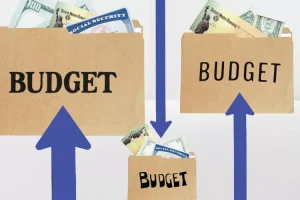
Long-term savings accounts can be used to save for large purchases, college expenses, retirement, and more. You can use long-term savings to pay for one-time expenses or help manage your day-to-day living costs once you’re no longer working.
Comparing different long-term savings account options, their interest rates, potential returns, fees, and more can help you decide where to keep your money. Not all savings accounts will meet your needs and goals, so consider the various types before signing up.
▼Key Takeaways
·Long-term savings accounts are used to hold the money you don’t expect to use any time soon.
·You might use a long-term savings account if you have a financial goal like saving for your child’s college tuition.
·There are several types of long-term savings accounts, such as high-yield accounts, IRAs, or certificates of deposit.
What Is a Long-Term Savings Account?
Long-term savings accounts are designed to hold the money you don’t expect to need to spend in the near future. They’re different from short-term savings or checking accounts that you might use to set aside money for bills, an upcoming vacation, wedding, or other one-time expenses. You can have a long-term savings account at a bank, credit union, or other financial institution. Some may charge monthly account fees, have withdrawal limits or penalties, and other rules to follow.
Long-term savings accounts are generally suited for goals that are several months or years away and help you take advantage of compounding interest. The longer you have to save and let interest compound, the more your money can grow.
▼Note
Before you start building your long-term savings, it’s essential to make sure you have short-term cash available in an emergency fund first. Financial experts recommend keeping three to six months’ worth of expenses in emergency savings.
These accounts can be used to further specific financial goals. For example, you may open a long-term savings account to get a head start on college planning while your kids are young. Or you may want to build long-term cash savings in a retirement account as part of a strategy to retire early.
Who Needs a Long-Term Savings Account?
Having a long-term savings account can benefit virtually anyone who wants to make the most of the money they don’t plan to spend soon. For example, say you want to buy a home in the future. Opening a savings account with a high interest rate can help you fund a down payment while earning interest until you’re ready to make your purchase.
Long-term savings can also pay off when you’re ready to retire. You can diversify your income sources with different types of long-term savings accounts. And certain types of accounts can offer tax advantages when you’re adding money to them—or when you need to withdraw it later.
Types of Long-Term Savings Accounts
Long-term savings accounts aren’t all alike, so it helps to know how they compare. Looking at the interest you could earn, fees you might pay, and whether there are any applicable tax or withdrawal rules can help you decide which long-term savings accounts are right for you.
▼Note
Interest rates for savings accounts and certificates of deposit (CD) are influenced by the federal funds rate. If the Federal Reserve raises or lowers this rate, banks may make similar adjustments to interest rates for deposit accounts.
High-Yield Savings Accounts
High-yield savings accounts offer interest rates and annual percentage yields (APYs) above what you may get with a traditional savings account. Brick-and-mortar banks and credit unions can offer high-yield accounts, but online banks often pay better rates to savers.
That’s because online banks tend to have lower overhead costs, which allows them to pass on higher rates to their customers. High-yield savings accounts from online banks can also charge fewer fees, allowing you to keep more of the interest you earn. Nevertheless, before moving money to any new savings account, check to make sure it’s FDIC-insured first.
Certificates of Deposit
CDs are time accounts. The money you add to this type of long-term savings account earns interest over a specified period. Once the CD matures, you receive your initial deposit along with the interest earned.
Some CDs can have shorter terms, ranging from 30 to 90 days. However, some have terms as long as 10 years. Generally, the longer the CD term, the higher your interest rate and APY are likely to be (but not always). Make sure you compare CD rates before choosing one.
▼Note
CD accounts often have early withdrawal penalties. Many banks or credit unions charge a percentage of the interest earned when you withdraw money from your CD ahead of the maturity date. If you choose to use a CD for your savings, make sure you have emergency funds elsewhere. Otherwise, you’ll have to pay early withdrawal fees if you take the money from your CD.
Individual Retirement Accounts
Individual retirement accounts (IRAs) are a tax-advantaged way to save for retirement. With a traditional IRA, you may be able to deduct your contributions on your taxes each year. With a Roth IRA, you don’t get a tax deduction for contributions, but qualified withdrawals are 100% tax-free.
Unlike a CD or a regular savings account, money saved in an IRA can be invested in mutual funds, exchange-traded funds, or other investment types. While IRAs carry more risks than CDs, there’s also a much greater potential for your money to grow if your chosen funds perform well.
▼Note
Withdrawing from an IRA before age 59 1/2 can trigger a 10% early withdrawal penalty. Depending on which type of IRA you’re taking money from, you may have to pay income tax on the withdrawal. Learn the difference between a traditional IRA and Roth IRA before deciding on one.
Employer-Sponsored Retirement Accounts
An employer-sponsored retirement plan—like a 401(k) or a 403(b)—is another long-term savings account with tax advantages. Contributions are tax-deductible, and the annual contribution limit is much higher than IRAs.
The potential employer matching contributions give 401(k) plans an edge over IRAs. If your employer matches a percentage of your contributions, you’re essentially getting free money to help fund your long-term retirement savings goals. You may also be able to take a hardship distribution or loan from your 401(k) if needed.
▼Note
If you take out a 401(k) loan and leave your job before it’s been repaid, your employer can ask for the entire balance in full. If you can’t pay it back, the loan is treated as a taxable distribution.
Education Savings Accounts
A 529 savings account allows you to contribute money on behalf of a qualified beneficiary, including your child, grandchild, or even yourself. Those contributions grow tax-deferred, and withdrawals are tax-free when used for qualified education expenses.
A Coverdell Education Savings Account (ESA) works along the same lines, but the difference is that a Coverdell ESA caps your annual contributions at $2,000, and no new contributions can be made after the beneficiary’s 18th birthday. Additionally, all money must be withdrawn from the account by the beneficiary’s 30th birthday; otherwise, a tax penalty applies.
How To Use Long-Term Savings Accounts Wisely
If you’re using a long-term savings account to plan ahead, there are a few tips to keep in mind to get the most out of your efforts:
- ·Compare interest rates: Analyze multiple savings accounts and CDs so you can shop around carefully and get the best rate possible.
- ·Pay attention to CD maturity dates: The penalty for early withdrawals can easily wipe out any interest you’ve earned.
- ·Remember that rates can fluctuate: Savings and CD rates can increase or decrease over time. Diversifying across different savings accounts can offer some insulation against rate changes.
- ·Choose accounts that fit your time frame: Ideally, you want to have as long a runway as possible to benefit from compounding interest.
- ·Check account fees: While you may be earning good returns from your investments or interest rate, hidden fees could nibble away at those earnings.
- ·Don’t drain retirement accounts prematurely: In doing so, you could not only end up with a large tax bill, but you may also shrink your nest egg.
The Bottom Line
Long-term savings accounts let you save money and accumulate compounded interest that you may not need for several years or even decades. Some of these accounts, such as an IRA or a 401(k), can also offer tax advantages when you make contributions or withdrawals.
Before you start building long-term savings, make sure you have a short-term emergency savings fund in place. Then compare different long-term savings options, rates, fees, and penalties so you can find the best rate of return for your money.
Frequently Asked Questions
Which savings account is best for long-term?
Which is best depends on what you’re saving for. Roth and traditional IRAs are good for retirement savings, and 529 plans are good for your children’s college tuition.
What are the three types of savings accounts?
There are several types of savings accounts, but the most popular are deposit accounts, money market accounts, and certificates of deposit.
What are examples of long-term savings?
Some examples of what you might be saving for in the long term are a car, major home renovations, retirement, emergency funds, or possible medical expenses.
Simplify Banking While Earning Competitive Rates
Juggling several checking and savings accounts can be a hassle. SoFi’s checking and savings account make banking all in one account. SoFi offers up to 4.30% APY (Annual Percentage Yield) and new members may earn up to a $300 bonus when setting up a direct deposit. Manage your checking and savings account seamlessly on the SoFi mobile app. Fill out an application today to get started. Terms apply.





